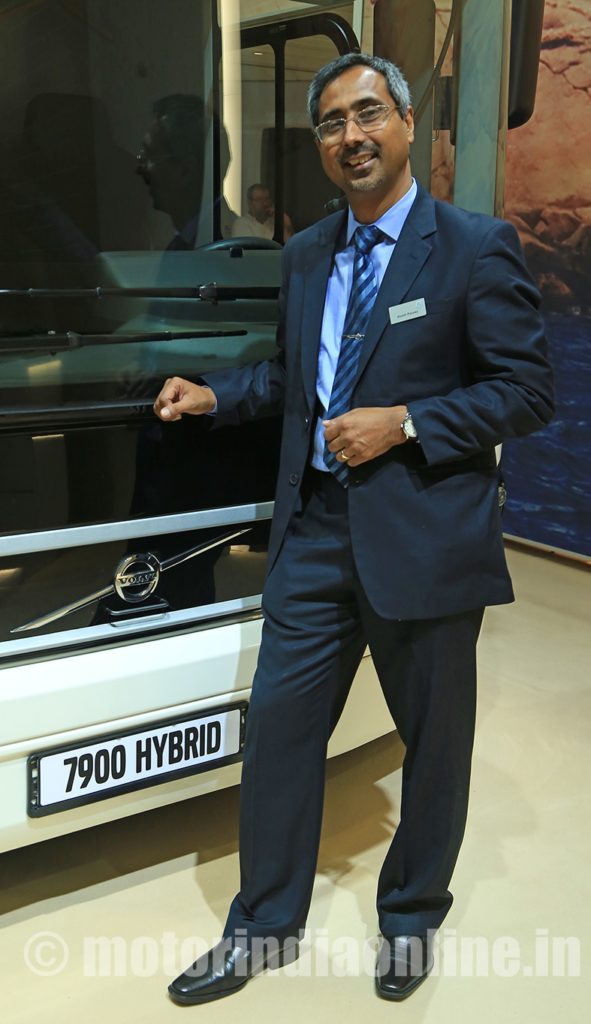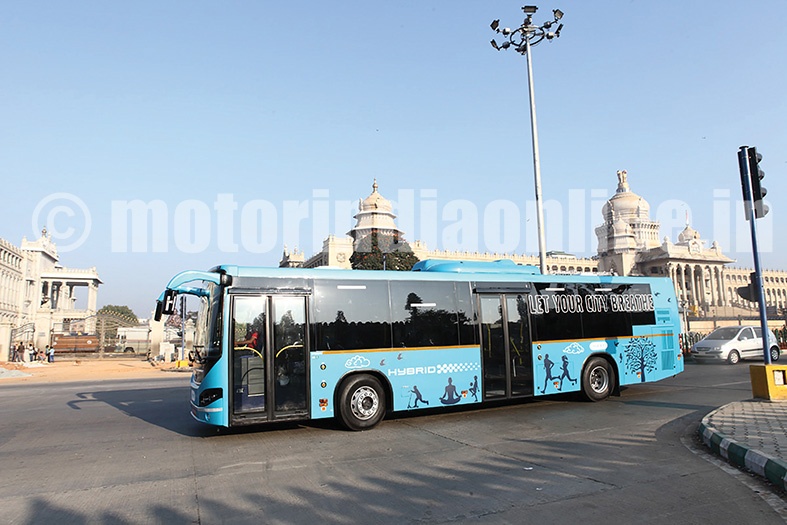By Akash Passey, Senior Vice President – Business Region International, Volvo Bus Corporation
Two decades ago, comfort and safety were not topmost considerations for passengers of bus-based public transport. One took a bus because it was often the only option to travel from point A to point B. Schedules were uncertain. Buses trundled along at the same pace as trucks on some pretty challenging roads. It was not a coincidence. Buses were built on truck chassis. So, in a nutshell, passengers travelled pretty much the same way as, say, bags of foodgrain. This situation was unacceptable in a country that had opened up its doors to globalisation and liberalisation. Incomes were on the rise. More people than ever could afford their own cars and two-wheelers. This generation of passengers would need buses to offer the same standards of comfort, safety, flexibility and reliability as their personal vehicles.

When Volvo entered the Indian market in 2001, we wanted to replicate in this country Volvo’s global success in transforming public transport. But it was certainly not a cakewalk to offer in a chassis-led market, a fully-built, air-conditioned bus developed on a true bus chassis, with standard features such as electronically controlled air suspensions, electronic braking and abundant cargo space. Many discussions centred on pricing. We stayed the course, convinced of the inherent value of the product. Some progressive private and public sector operators started trials of our 12-metre coach. Passenger feedback was overwhelmingly positive.
Before long, operators realised that Volvo had emerged as a ticket brand. Volvo branded buses and often even fake Volvos could command a premium in ticketing. State Transport Undertakings began to operate special branded services. New routes emerged. As average speeds improved and services became reliable, overnight journeys were now convenient options. Failure to obtain a train ticket was no longer a matter of life and death.
With this Volvo Bus managed to make its first key contribution to the Indian bus industry, that is, to provide a safe and comfortable inter-city coach built on a true bus chassis concept.
In this scenario, the Volvo bus’ sticker price was no longer a standalone thought in the operator’s mind. The Total Cost of Ownership (TCO) concept kicked in as our customers factored in superior reliability, longer life and better ticket realisations.
Volvo Buses has always believed in anticipating customer needs rather than following them. This led to the second key change driver for the Indian bus industry. So India’s first rear-engine low floor city bus debuted in early 2006. Civic corporations led by the Bengaluru Metropolitan Transport Corporation (BMTC) were very supportive in taking up a true low-entry air-conditioned city bus. The message was clear. Buses catering to city operations had different duty cycles and passenger profiles vis-à-vis those operating on inter-city routes. So the solution had to be tailored differently.
As the market gained critical mass it gave Volvo buses an opportunity to lead the bus industry into its next big step. In 2008, we unveiled India’s complete bus company. Fully-built customised buses rolled out from our facility at Hosakote near Bengaluru. Very soon, the multi-axle bus was another innovation we were happy to bring into the market. The coach delivered unprecedented economies of scale to operators even as seat availability improved for passengers. Operators now had the possibility to roll out services on routes that are up to 2,000 km long.
Present scenario
Today, 15 years since the India journey began, Volvo Buses boasts of a population of 5,600 buses. Our inter-city coaches touch almost all small and big cities in India. Additionally, over 1,500 city buses operate across 34 cities.
Volvo customers are supported by a comprehensive aftermarket infrastructure. Further, to enable customers to derive the best value from the product, Volvo Buses has thus far trained over 27,000 drivers.
The next frontier for India is electro mobility. Over the last five years, I have been responsible for the Volvo Group’s operations in all global markets other than those in Europe and the Americas. From this perspective, I see that public transport is getting the much-needed attention from policy makers. Rapidly increasing emissions and traffic congestion is forcing a re-think on personal transport and shift the focus to high quality bus and metro solutions.
Electric and hybrid buses have the potential to cut emissions while also curbing congestion. It is no wonder then that Europe, the US and China have taken a lead in developing these green modes of transport.
The Volvo Group introduced the first hybrid bus globally around 2009, and Volvo Bus Corporation has now sold over 7,000 hybrids and electric hybrid buses in 21 countries. A full electric bus goes into serial production next year.
The Indian Government has its commendable focus on green public transport. The FAME India scheme actively encourages adoption of hybrid and electric vehicles. The Smart Cities initiative which seeks to create a 100 Smart Cities provides the right setting for the adoption of electro mobility solutions. In this context, we are happy to have started pilots of two hybrid buses in partnership with the Navi Mumbai Municipal Transport (NMMT). The initial feedback has been extremely positive given that fuel savings are concurrent with a reduction in emissions. We are poised to extend our electro mobility agenda to other cities.
Our value brand UD buses emphasises more for less in the best possible manner. Bridging the gap between premium and mass market offerings, UD buses are being piloted in Ahmedabad’s successful Bus Rapid Transit System corridor (BRTS). These buses consistently enjoy high levels of ridership, especially from customers who have chosen to give up personal modes of transport. Gauging from this experience, civic corporations in other cities have also expressed keen interest in UD buses for their BRTS projects.
Exports have been a good success story for Volvo Buses. We have addressed right-hand drive bus markets adjacent to India as well as those further ashore such as South Africa. A significant achievement is our export of fully-built buses to Europe. It underscores the winning combination of quality and cost in India.
Volvo Group capabilities are also enhanced by the presence and spread of medium and heavy duty front-engined buses accruing from VECV, the JV between the Volvo Group and Eicher Motors. Eicher’s three-decade presence in the Indian bus industry is a huge force multiplier.
Such a bouquet of brands enables us to be among few global bus manufacturers who can address the entire spectrum of the Indian market.
Looking ahead
We are happy to note that many global bus manufacturers have begun participating in the Indian bus market. Additionally, incumbent domestic bus manufacturers have also expanded their product solutions over the last decade. Most importantly, following Volvo’s lead, all OEMs are now capable of offering fully built buses rather than chassis.
We believe that growth in the number of market players can only serve customers better, while expanding the overall pie. The Indian bus market still has a long way to go. The country’s bus population is abysmally low vis-à-vis that of passenger cars. And even the existing bus population has an average age that cannot be characterised as healthy. Looking at it another way in India, bus sales are just about 10 per cent of overall commercial vehicle sales. This share is substantially higher in most other evolved markets across the world.
The good news is that in India the Government is formulating policies that are friendly towards bus-based public transport. And transport operators are rapidly adopting best practices to maximise capacity utilisation and optimise costs. A parallel feature is the disruption caused by technology. With the rise of car and bus hailing applications, the urban commuter no longer needs to drive to work. Applications for driver licences have already dropped in some parts of the world.
We therefore believe that in India Volvo Bus is in the right place at the right time. There is so much more that can happen. We will be at the forefront of this change, attempting to drive quality of life of a resurgent India.
